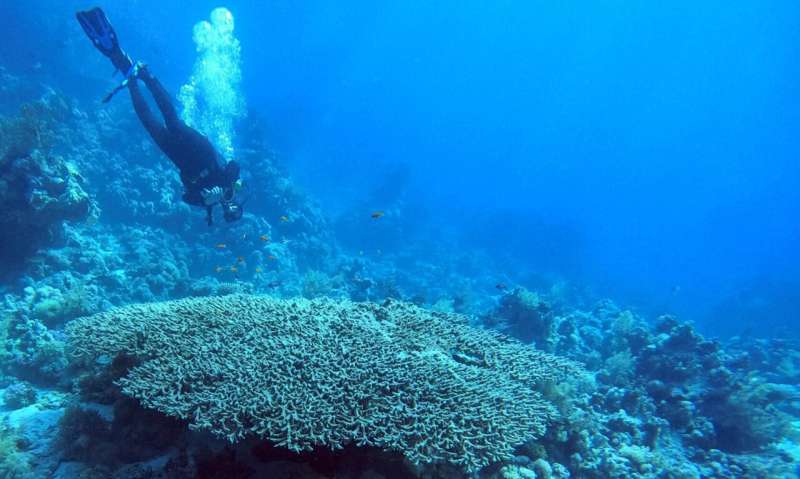This article has been reviewed according to Science X's editorial process and policies. Editors have highlighted the following attributes while ensuring the content's credibility:
fact-checked
proofread
New perspectives for using corals in climate research

Ancient ocean temperatures are most commonly reconstructed by analyzing the ratio of different oxygen atoms in the calcium carbonate remains of fossils. However, this presents many challenges, including a combination of biological processes known as "vital effects" which are very noticeable in corals and can affect the data.
A research team led by the University of Göttingen now shows how the abundance of a third, very rare oxygen isotope can uncover whether the isotopic composition was solely influenced by temperature or if biological effects also played a role. The results were published in Geochemical Perspective Letters.
The hard structure of coral, known as the "coral skeleton," is composed of calcium carbonate, the same material that makes up limestones. Corals, like all marine organisms, selectively incorporate different forms of oxygen. These different forms are called isotopes, meaning some oxygen atoms are lighter and some are heavier.
At lower water temperatures, a higher abundance of the heavy oxygen isotope is incorporated into the carbonate structures. By analyzing the ratios of the heavy oxygen-18 isotope to the light oxygen-16 isotope in carbonates, scientists can calculate the ambient seawater temperatures of Earth's distant past.
However, some carbonates, such as coral skeletons, return false temperatures because their oxygen isotope composition is also affected by the biological processes known as vital effects.
The researchers have now discovered that a third, very rare isotope (oxygen-17) can be used to correct for these biological effects. As a result, researchers can now determine past ocean temperatures with greater accuracy, in addition to gaining more insights into the biomineralization processes of different coral species.
Measurements of this rare oxygen-17 isotope, known in the field as the triple oxygen isotope method, in carbonates are normally very complicated. In fact, the stable isotope laboratory at the Göttingen University is among only a few in the world that can perform such analyses. The lab used cutting-edge instrumentation known as tunable diode laser absorption spectroscopy.
"We used corals for our study as we know quite a lot about the processes by which they grow their skeletons," said study leader, Dr. David Bajnai at Göttingen University's Geoscience Center.
"We are excited to apply this concept to other organisms commonly used in the study of Earth's past climate. We hope that triple oxygen isotope analyses will open up previously unusable datasets for paleoclimate research, enabling more accurate climate reconstructions, going further back in time."
Professor Daniel Herwartz from the Ruhr University Bochum added, "We were also able to show that triple oxygen isotope analyses can inform us about the various processes we collectively call 'vital effects.'
"For corals, we can now confirm that the main process involved is related to a chemical process called CO2 absorption, which we have independently studied in experiments. Such advanced techniques help to gain new insights into how organisms build their harder structures."
More information: D. Bajnai et al, Correcting for vital effects in coral carbonate using triple oxygen isotopes, Geochemical Perspectives Letters (2024). DOI: 10.7185/geochemlet.2430
Provided by Georg-August-Universität Göttingen





















